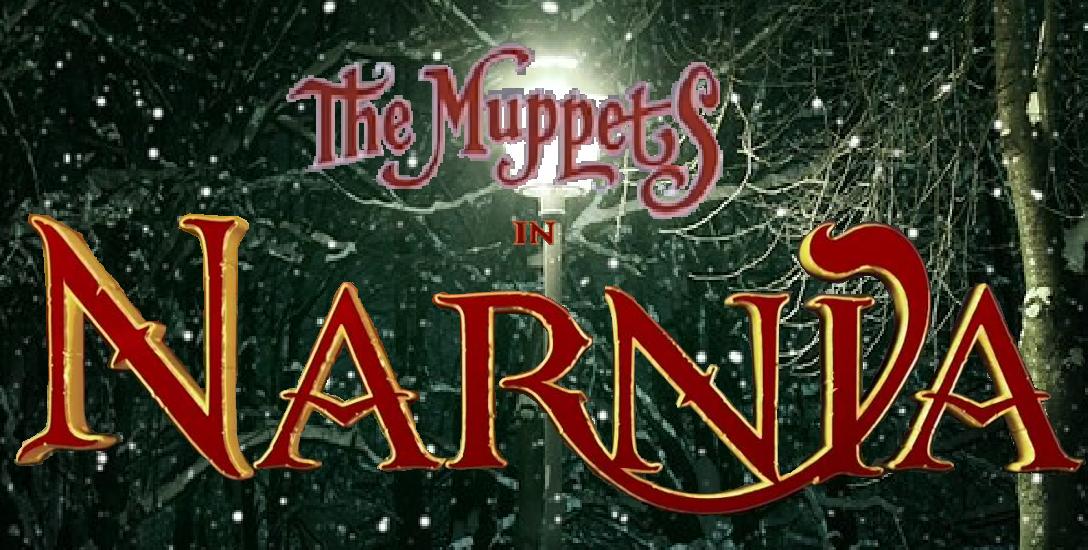A whole slew of Narnia and other film site journalists got the chance of a lifetime: to visit the set of Prince Caspian in Prague. Anyone that knows me also knows how much that I envy every one of those folks that were given the opportunity. Someday maybe?
Anyway, here we’ll start with our sister site NarniaWeb, where glumPuddle provides a preview of what’s to come in the month ahead, surrounding these set reports.
Overview
This is the first of a series of reports on my set visit. Disney has asked that these reports be released over a few months, each one focusing on a different aspect of the production: Creatures & Visual Effects, Production Design, Costumes, and the Cast. This first report will be a general overview of my trip, a look at the filming of a sequence, and an interview with Director Andrew Adamson! Consider this report a preview for the reports to come.
I arrived in Prague (jet-lagged) on June 3. I thought waiting for the movie to come out was hard, but that was nothing compared to this! I knew I would be in Narnia the next day, and time seemed to crawl by. I only got a few hours sleep because I was so excited. But the moment we entered Barrandov studios the next day, I felt an immediate surge of energy.
Here is a brief rundown of my two days spent in Narnia:
Sets visited:
The Dancing Lawn
Telmarine Stables
Aslan’s How interior
Aslan’s How exterior
Telmarine castle courtyard and drawbridge (wow)
Tunnels Beneath Aslan’s How
Smaller-scale Tunnels (for Wimbleweather)
Crew interviewed:
Andrew Adamson (Director)
Roger Ford (Production Designer)
Isis Mussenden (Costume Designer)
Kimberly Adams (Associate Costume Designer)
Richard Taylor (Head of Weta Workshop)
Howard Berger (Makeup, KNB EFX)
Dean Wright (Visual Effects Supervisor)
Rob Derry (Animatronics)
Cast interviewed:
William Moseley (Peter)
Skandar Keynes (Edmund)
Ben Barnes (Caspian)
Sergio Castellitto & Pierfrancesco Favino (Miraz & Glozelle)
Shane Rangi (Asterius, and a stand-in for various CG characters such as Aslan, the Werewolf, and the Bulgy Bear!)
Probably the highlight of the trip for me was Day 2, when we actually witnessed the filming of a sequence in Ústí! It took us over an hour to get to the location, and we had to wind our way through endless dirt roads. In this report, I will describe the scene I saw being filmed, and how all the different departments had to work together to make it happen.
The Scene: In the film, the single combat between Peter and Miraz will take place about 50 yards (I would estimate) from Aslan’s How. Various Narnian creatures (centaurs, fauns, satyrs, dwarfs, and even minotaurs) stand on either side of the entrance to the How. As Peter and Edmund emerge (wearing their armor from the first film), the Narnians begin raising their weapons and cheering them on. Edmund carries Peter’s sword as they approach the fighting area. Glenstorm is there waiting for them. When they get there, Peter takes his sword from Edmund and steps forward.
Read the rest of this amazing report at NarniaWeb
Set Visit Detailed
ComingSoon.net helps us continue this journey through the set visits:
As we arrived at Barrandov Studios in Prague, we were introduced to Unit Publicist Ernie Malik, our tour guide for our intensive two-day look at the production of Prince Caspian. At Barrandov, the project had been nicknamed “Toastie” to throw-off nosy would-be fans and reporters, and our guest badges had a cute picture of the mouse Reepacheep toasting a cheese sandwich over a candle, a reference to something said by the mouse in the book. (Malik wouldn’t explain the meaning or relevance of the term “Toastie” because he was saving it for his behind-the-scenes book, which one presumes will be available from Amazon, Borders and other fine book retailers closer to the movie’s release next summer.) Malik gave us a brief history of the studio, which had been built in 1931 and used for the filming of hundreds of Nazi propaganda films before establishing a better rep in the ’60s as the location where Milos Forman shot many of his early films.
The production was taking up three of Barrandov’s ten soundstages, down from five earlier in the production, as well as a number of outdoor locations in the Czech Republic, Slovenia and Poland. After hanging around the production offices for a bit, the first thing we got to see the Dancing Lawn, an important location in the story because it’s where Prince Caspian first discovers the Narnians, as well as where the dwarf Trumpkin (played by Peter Dinklage) tells the Pevensie kids Caspian’s story. What’s interesting is that they’ve changed the structure of Lewis’ novel, which starts with the Pevensies returning to Narnia, finding Trumpkin and then hearing the story of Caspian. That ends up taking up a number of chapters before returning to the Pevensies, and then eventually the two stories converge. Malik suggested that they would be jumping back and forth between the stories more in the film version rather than following Lewis’ timeline. This indoor set really gave you the feeling of being outdoors. In the center was a large grass-covered clearing surrounded by actual trees that had been rooted indoors, and pathways and primitive stone steps led to and from the area through the trees. Surrounding this immense wooded soundstage was a 360 degree matte painting to embellish the forest and make it look even bigger, although this indoor setting would be used in conjunction with scenes shot outdoors in the forests of Poland.
In the second sound stage we visited, they were changing things over from the Great Hall where Miraz is coronated as king (presumably another flashback) to the stables where Prince Caspian steals a horse to escape after being imprisoned by his uncle. In another section of that stage, Ernie showed us an interior cave location that was previously used as a cistern in Aslan’s How and was being remodeled as another part of the underground cave system where the Narnians hide from King Miraz’s army. This location was a shrine that had been built up around the stone table onto which Aslan was tied and killed by the White Witch in the previous movie. Although the table was no longer there, it was an impressive space that had hieroglyphic inscriptions running around the top, but Ernie told us we’d have to get production designer Roger Ford to tell us what they meant. (He wouldn’t.) Ernie told us that the cave originally had carvings along the walls of the cave that tell the history of Narnia in the 1300 years since Aslan’s murder and rebirth. (The carvings were covered up because the cave was being refashioned as another section of Aslan’s How, but Ernie did a good job describing how impressive they were, particularly a carving of Aslan.)
After that, we were led outside to one of the most fantastic outdoor sets we’ve ever seen, the immense interior courtyard of Miraz’s castle where they would shoot a new scene that doesn’t appear in the book in which Peter and Caspian stage a night raid on Miraz’s castle “with dire circumstances.” We walked around and checked out this impressive construct, which looked like it was built out of real stone and metal with balconies and stairways to various doorways and what might as well have been a working well in the middle. Ernie told us that it took 200 men nearly 15 weeks to build this location for an ambitious battle sequence involving 150 extras playing Narnians and Telmarines, and that it was designed to give Adamson many options when choreographing the action. (Having spent some time in Bucharest at a number of actual castles, I can attest to the realism of the design and construction.) We walked around then through the castle gates and over the drawbridge where we could see from a distance the Telmarine village that was being built. Apparently, this sequence, which again isn’t in the book, is going to give us a lot more expansive look at the Telmarine society with the actual village and castle structures being expanded upon using CG and models that were being constructed and filmed back in New Zealand.
Read the rest of this incredible coverage here at ComingSoon.net
SciFi Wire rounds out this first set report with an interview with Andrew Adamson.
“This one I wanted to be bigger, and I am regretting that decision now,” Adamson said with a laugh on the set of the film in Prague last month. “Because we are revisiting a similar world, you want to give yourself new challenges. So we deliberately made things more complicated. On top of that, there’ve been a lot of films that have come out [since the first was released] that have also raised the bar. So we wanted to make sure we were doing something new and fresh.”
“Narnia had been created approximately 900 years before the last film took place,” Adamson said. “This is now another 1,300 years later. Narnia has been oppressed by Telmarines for a large period of that time. So it’s a dirtier, grittier, darker place than the last world was. When the kids come back in, they bring a lot of nostalgia with them, and they think they are going back to the place they knew. And instead, they’ve come back to a very changed world.”
Adamson went on to explain the origins of the location as it is described in the original book by C.S. Lewis. “The set we are at now, Aslan’s How, this is where the stone table once was,” he said. “It fell as the earth subsided, and the Narnians built a huge, sort of, almost burial mound over it, and then that has fallen into ruin and disrepair as Aslan and all of that has been forgotten. So what you are seeing there is actually about 60 feet tall. The How itself, in the final film, will be about two-and-half times that. In general, I wanted the scale, the movie to be bigger than the last film.”
For Adamson, Prince Caspian has also been a chance to take on board some of the lessons he learned while making the first film.
“I learned never to do a film with locations, children, animals and visual effects, and so I decided to do that again,” he joked. “I mean, you always hope that after each film you’ve learned a little and you’ve improved as a filmmaker. I always feel like this is just an ongoing learning experience and it will hopefully be that throughout my career. I think the reason that this film is bigger than the last one is because I learned to do things last time, and so I’ve created new challenges for myself, to make it more complicated and bigger, which creates a better experience for the audience as well.”
Visit SciFi Wire for the rest. And stay tuned to NarniaFans.com as we bring you coverage from all corners of the Narnia world.


